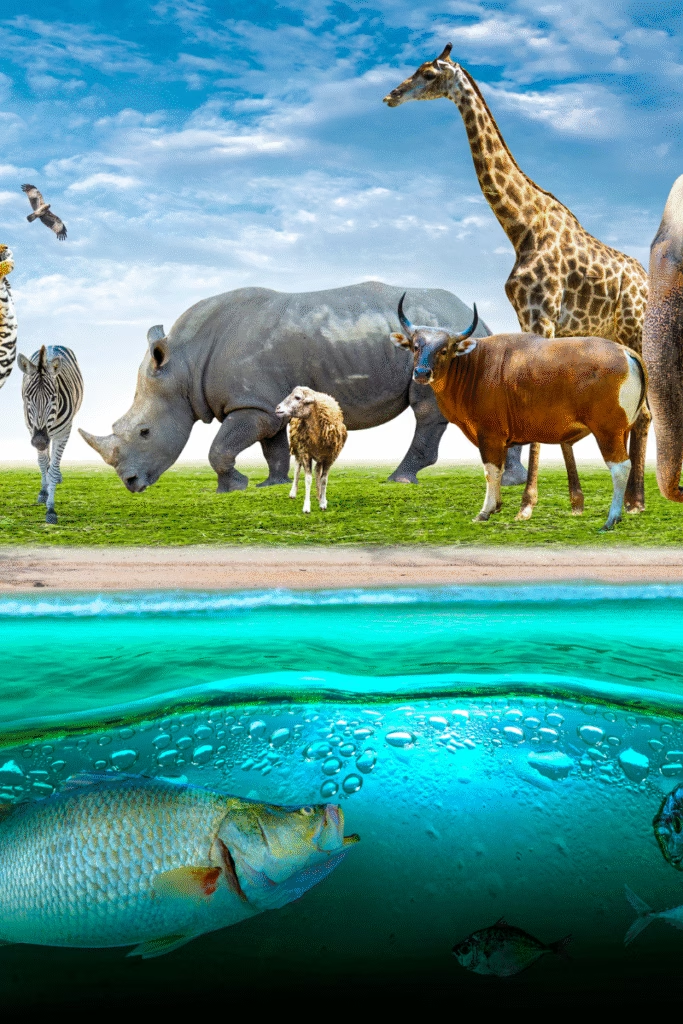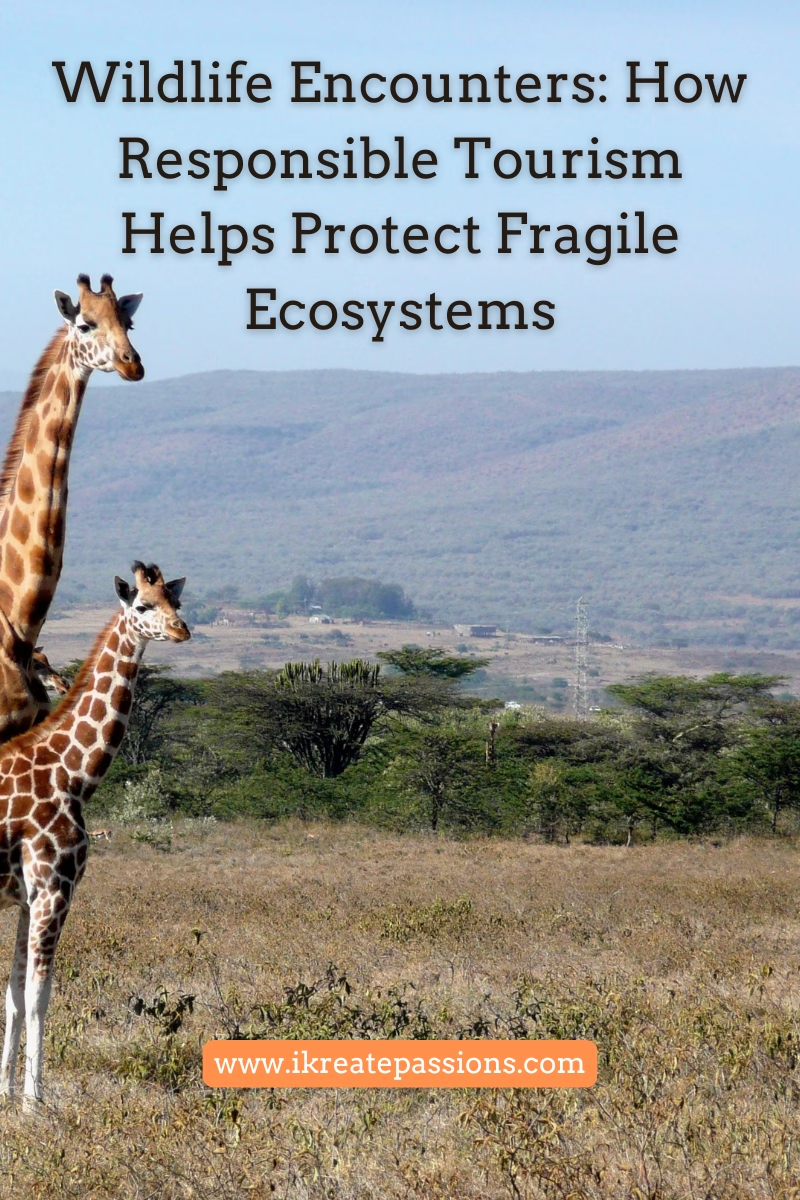Key Takeaways
- Responsible tourism offers transformative wildlife experiences while directly contributing to the protection of some of the world’s most fragile ecosystems.
- Even simple, mindful actions by travelers, such as choosing ethical guides and reducing waste, can have a positive, lasting impact on habitats and species.
- When properly managed, tourism revenue funds crucial conservation efforts and strengthens communities living alongside these ecosystems.
- Education and collaboration with local stakeholders lie at the heart of effective, sustainable travel strategies.
- By embracing responsible travel now, future generations can continue discovering and enjoying wild places teeming with biodiversity.
Getting close to wildlife in its natural habitat is a powerful, often life-changing experience. But behind every breathtaking encounter lies a delicate balance that requires careful stewardship to protect animals and ecosystems. As tourism grows in popularity, so does its impact on the natural world. Thankfully, a rising movement toward responsible tourism is helping to shift the narrative. By prioritizing conservation, education, and ethical practices, travelers can play a vital role in preserving fragile ecosystems for generations to come.
The Global Importance Of Fragile Ecosystems
Across every continent, fragile ecosystems—from lush rainforests and dry grasslands to vibrant coral reefs and isolated archipelagos—provide the foundation for a dazzling array of species. These environments offer more than just scenic vistas for passersby; they serve as the planet’s green lungs, fresh water fountains, and gene bankssupportingt agriculture and medicine. Wildlife-rich destinations like those visited during Galapagos tours vividly illustrate the delicate tapestry of life woven between native flora, fauna, and local cultures. Unfortunately, the rapid impact of global changes, unsustainable development, and poorly managed tourism threatens to unravel these complex interconnections.
Researchers have documented how a small increase in visitor numbers can dramatically alter animal behavior, cause soil erosion, spread invasive species, and add waste to pristine habitats. Many iconic sites now face an “overtourism” problem, which brings a visible decline in wildlife sightings, increased stress on breeding grounds, and loss of authentic local traditions. Yet, travelers are becoming more aware; many seek destinations with conservation programs to ensure their visit leaves a positive imprint. Whether exploring well-known reserves or hidden gems, every ecosystem on Earth deserves thoughtful stewardship to maintain its beauty and ecological function long into the future.
Defining Responsible Tourism
Responsible tourism challenges visitors to consider their choices at every stage of their journey—before, during, and after travel. It’s about more than just limiting your environmental footprint; it’s about contributing to the well-being of the places you visit. Responsible travelers research reputable local operators, ask about policies relating to wildlife welfare, and plan routes that avoid disturbing sensitive areas. According to the World Wildlife Fund, these thoughtful actions don’t just minimize harm—they actively support conservation goals, from restoring forests to recovering endangered species.
Beyond the direct interaction with wildlife, responsible tourism also encourages respect for cultural customs, buying local handmade products, and participating in activities that benefit the whole community. Simple gestures—such as carrying a reusable water bottle or learning about threatened habitats before you go—contribute to a broader movement that values preservation over exploitation. Wildlife and visitors benefit from less disruption and more authentic, meaningful encounters as more protected areas incorporate “leave no trace” and limited group size policies.

Impact Of Tourism On Wildlife And Habitats
Tourism’s influence on wildlife and habitats is a double-edged sword. On the one hand, too many visitors—or itineraries that neglect conservation—can disrupt feeding patterns, scare breeding birds from nests, and trample sensitive vegetation. In regions where governing bodies lack resources, the sudden influx of people can bring pollution, illegal wildlife trade, or even direct habitat loss. However, the story is not all negative. Carefully designed tourism interventions can be transformative, providing ecosystems with the visibility and the funding needed to survive.

Entrance fees, guide jobs, and community investments all hinge on a steady flow of eco-minded travellers. Moreover, armed with knowledge and sensitivity, responsible visitors often act as informal ambassadors, spreading preservation messages long after their trips. Setting limits on group sizes, establishing wildlife observation distances, and providing conservation education are all best practices that help align the interests of biodiversity, travellers, and local people.
Conservation Success Stories Linked To Tourism
Around the globe, conservation and sustainable tourism have united for remarkable wins. Costa Rica is celebrated for its network of rainforests and cloud forests, where tourism revenue has supported decades of reforestation, helping restore populations of monkeys, birds, and amphibians. In marine settings, establishing dive sites and snorkeling zones—funded by traveler dollars—has contributed to the recovery of overfished reefs and protected breeding areas for sea turtles and sharks.
Islands are often primarily dependent on tourism for conservation. With few alternative economic options, eco-friendly travel programs have replaced destructive industries like uncontrolled fishing or mining. Visitors in these regions often pay higher fees or take guided tours, with funds flowing directly into scientific monitoring, anti-poaching patrols, and habitat restoration projects. These success stories show that when travelers support ethical tourism models, they are active participants in a powerful global movement to heal and protect wild places for future generations.
Community Involvement In Sustainable Travel
Community participation is one of the pillars of true responsible tourism. Local people are the lifelong stewards of their environment, holding rich knowledge and unique perspectives on the needs of their home territories. As travel shifts toward sustainability, many conservation organizations collaborate directly with indigenous and rural communities to train guides, promote artisan products, and include locals in decision-making.
Experiences led by community members generally provide deeper, more memorable cultural exchanges and increased economic benefits that incentivize wildlife conservation. When tourism revenue pays for education, healthcare, or infrastructure, those living alongside wildlife are motivated to become protectors of nature rather than competitors. Around the world, indigenous-guided walks, wildlife tracking, and storytelling have become sought-after travel experiences because they foster connection with place, people, and planet.
The Role Of Environmental Education
A truly impactful wildlife encounter inspires curiosity and concern for the natural world. On-site visitor centers, community presentations, and interpretive walks bring conservation issues to life, connecting travelers with the stories and science of a destination. Enthusiastic guides and educators teach about local challenges and recent successes, encouraging guests to become defenders of biodiversity both during and after their trips.
Education also helps travelers understand the delicate balance between human needs and wildlife survival—a lesson that resonates deeply when you see the tangible results of community-driven conservation. For many, the most potent memories of any trip are not simply the animals encountered, but the knowledge gained and the resolve to help protect wild places in the future.
Looking Forward: Making Smart Choices For The Planet
Every journey offers a unique opportunity to make a positive difference. Responsible tourism is a meaningful way for individuals to contribute to change as global environmental threats increase. With careful research, an open mind, and a willingness to learn, today’s travelers and adventure-seekers shape the future of wild places, ensuring that fragile ecosystems remain vibrant and resilient for generations to come. By choosing conservation-minded experiences, supporting local communities, and sharing what they learn, travelers can leave behind lighter footprints and a brighter path for the wildlife and people who depend on these places most.
Read more blog posts from my TRAVEL category
